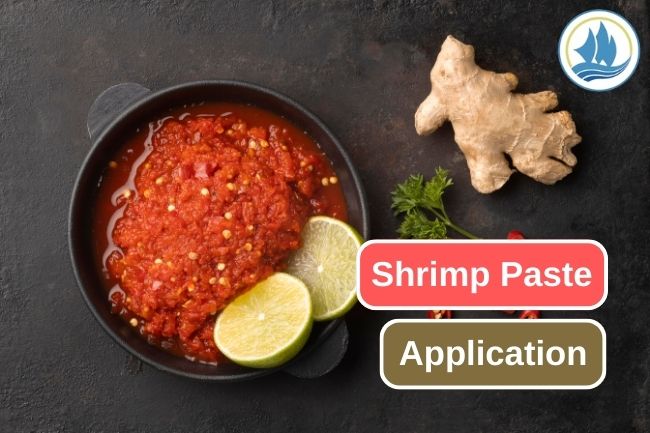The Application of Shrimp Paste in Asian Cuisine
By. Nevanda - 28 Jul 2023
kelolalaut.com - Shrimp paste, or terasi, is a versatile ingredient that adds a unique umami flavor to various dishes. Here are some common applications of shrimp paste in cooking:
1. Indonesian Sambal
Shrimp paste is a key ingredient in Indonesian sambal, a spicy chili sauce. It adds depth and complexity to the sambal's flavor. To make sambal, you can blend together chili peppers, shallots, garlic, tomato, shrimp paste, lime juice, and salt.
2. Thai Curry
In Thai cuisine, shrimp paste is used in curry pastes to enhance the flavors of dishes like Thai red curry or green curry. Along with other ingredients like lemongrass, galangal, and chili, shrimp paste gives the curry a rich and savory taste.
Read also: Learn about Shrimp Paste Making Process
3. Malaysian Belacan
In Malaysia, shrimp paste is known as belacan and is often toasted before use. Belacan is a crucial ingredient in dishes like sambal belacan and nasi lemak, imparting its distinctive aroma and taste to these dishes.
4. Filipino Bagoong
In the Philippines, shrimp paste is used to make bagoong, a fermented shrimp paste. Bagoong is a popular condiment and is often paired with green mangoes or used as a base for various Filipino dishes.
5. Vietnamese Mắm Ruốc
In Vietnam, shrimp paste is used to make Mắm Ruốc, a paste that is commonly used as a dipping sauce for snacks or as an ingredient in various Vietnamese dishes.
Read also: 5 Ways to Choose Fresh Shrimp
6. Stir-Fries and Sauces
Shrimp paste can be added to stir-fries, noodles, and vegetable dishes to impart its savory taste. It can also be used in sauces and dressings to enhance their flavor.
When using shrimp paste, it is essential to remember that it is a potent and concentrated ingredient, so a little goes a long way. You may want to start with a small amount and adjust according to your taste preferences. Additionally, shrimp paste is quite pungent and can have a strong odor, so ensure proper ventilation while cooking with it.
Please note that shrimp paste is not suitable for people with shellfish allergies, and it's essential to check for any dietary restrictions or preferences before using it in your dishes.
Read also: List of Common Seafood Delights in Sushi

.jpg)
.jpg)
.jpg)




